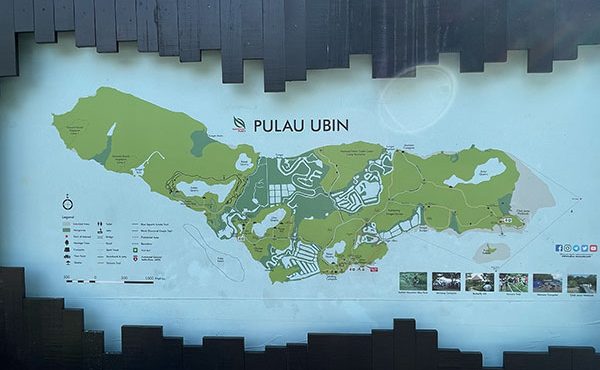 Photograph courtesy of Aaron Hirschfeld
Photograph courtesy of Aaron Hirschfeld
.
One of the reasons why SkyTrain is so popular is that you can wait in relative comfort. But there are many more people waiting at bus stops all over the region with little protection from the elements. And it’s not just the bus shelters. Here is a list of my personal complaints:
.
 1) Poor visibility of signage. We have to start thinking of our aging population, those with visual impairments, and children. For these people who need the information most, putting it on top of a pole makes it almost impossible to see – as the image on the left clearly demonstrates.
1) Poor visibility of signage. We have to start thinking of our aging population, those with visual impairments, and children. For these people who need the information most, putting it on top of a pole makes it almost impossible to see – as the image on the left clearly demonstrates.
2) Monolingual information. In Tokyo, transit signage is always written in both English and Japanese, and Korean was added to Japan Rail signage at the time of the Nagano Olympics. Berlin? German, English, French, Spanish, and Italian. And how about Vancouver, where the last census found that 50.6% of the population had a language other than English as their mother tongue and where we host tourists from every corner of the world? English only. Do this truly reflect the nature of our city?
 3) Poorly labeled signs. Bus stops tell you that a bus does indeed stop there but – as you can see in the photo at a Granville St. stop – many of the simpler signs don’t tell you which bus stops there. All one can gather from this is that there is something called a NightBus that stops there. How about the daytime??
3) Poorly labeled signs. Bus stops tell you that a bus does indeed stop there but – as you can see in the photo at a Granville St. stop – many of the simpler signs don’t tell you which bus stops there. All one can gather from this is that there is something called a NightBus that stops there. How about the daytime??
4) Shelters are too small. How many people can you fit under a bus shelter? Eight or ten? And we know how Vancouverites like their space.
5) Poor maps. If there is a map on the bus shelter, it is invariably of the whole of Greater Vancouver, which is not very useful when you: a) Don’t know where you are, and b) just want to find out where the #4 bus goes.
6) No bus schedules. While standing at the local bus stop, one has to wait and hope for the best – unless you have a cell phone (see TransitFan’s last post). On the rare occasion when you do find a schedule, the print is almost too small to be useful.
 7) Minimal protection. Take this example in front of Waterfront Station, a very busy stop with people switching between the 98 B-Line and the SeaBus. That little glass overhang offers no protection at all from the rain once the wind starts blowing. So what you see is people waiting inside the station for the bus to come.
7) Minimal protection. Take this example in front of Waterfront Station, a very busy stop with people switching between the 98 B-Line and the SeaBus. That little glass overhang offers no protection at all from the rain once the wind starts blowing. So what you see is people waiting inside the station for the bus to come.
If we really want to encourage bus use in Greater Vancouver, we need to seriously rethink the way we design our bus stops and their signage. In a city seemingly driven by progressive transit-oriented thinking, it seems the least we can do.
Next time: TransitFan will look at some of the better bus stops around town and use them to suggest some improvements.
***
John Calimente is the president of Rail Integrated Developments. He supports great mass transit, cycling, walking, transit integrated developments, and non-automobile urban life. Click here to follow TheTransitFan on Twitter.

